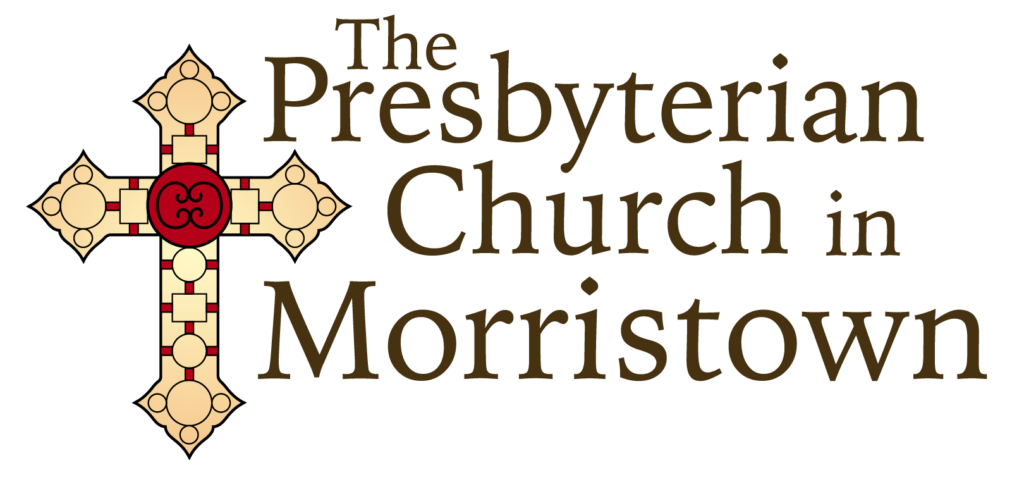Location #4
The knoll where the steeple of the Second Meeting House now stands
On the knoll you are near several sites of interest. The steeple is the top 15 feet of what once stood atop the Second Meeting House. It was lowered to the ground and donated to The Washington Association where it rested on the grounds of the Ford Mansion until it was returned to the church by the National Park Service in the mid-1930s. Recently, it was restored and moved to the present site. To your immediate left is a marker honoring Colonel Daniel Hitchcock of the Second Rhode Island Regiment and its successor units, who died of wounds and exposure following the Battle of Princeton in early January 1777. He also is said to have had an involvement in the burning of the HMS Gaspee by Rhode Island Patriots in 1772. About 25 feet away near the wall, you will see a cluster of four Table Top markers. The closest marker to you is that of Thomas Kinney, Esq., the Morris County Sheriff, who served briefly as Captain of the Light Horse Troop. This troop gained fame for its ability to make rapid strikes against the British. Next to Thomas Kinney’s grave is the upright sandstone grave marker of Benjamin Hathaway. A physician and inn operator, he was the first President of the Board of Trustees after the church’s Charter was granted in September 1756. Benjamin donated the land near the intersection of Morris and Spring Streets where the Parsonage was built, resulting in Reverend Timothy Johnes becoming his neighbor.
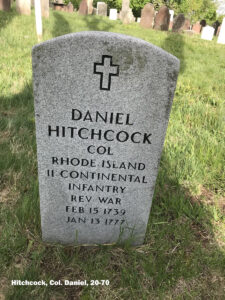
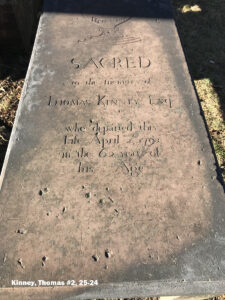
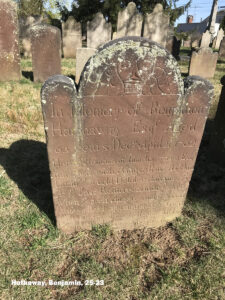
In the opposite direction about 25 feet away is the grave of Colonel Jacob Arnold. In 1775, Jacob took over as proprietor of Arnold’s Tavern which had been founded by his father Samuel Arnold. The tavern served as Washington’s Headquarters during the Winter of 1776-1777. He also succeeded his business partner Thomas Kinney as Captain of the Light Horse Troop. Jacob Arnold’s likeness is another of those appearing on the former department store on the Green. As for the tavern, it went through several owners and finally was moved to the edge of town along Mount Kemble Avenue, where it became the first site of All Soul’s Hospital. Jacob Arnold’s home still stands in Washington Valley across from “The Old School House.” A few markers to the right of Jacob’s are those of his parents Samuel and Phebe Ford Arnold Phillips. Phebe was the eldest daughter of Hannah & Jacob Baldwin Ford, Sr.
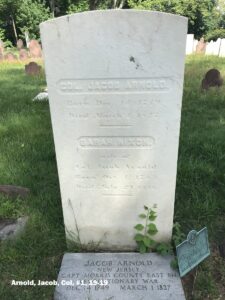
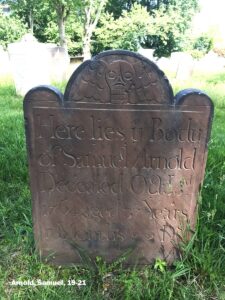
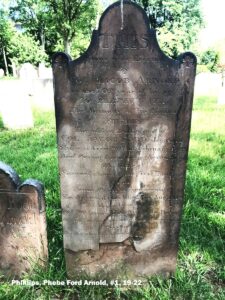
Also nearby are a short brownstone marker and five large grayish white markers. The tallest of these is a memorial to the family of Isaac Canfield. Among those interred at this site is Margaret Caldwell Canfield, Isaac’s wife. Margaret’s father was Reverend James Caldwell, who served as a Chaplain for Colonel Elias Dayton’s Regiment during the American Revolution. Reverend Caldwell probably is most famous for passing out hymn books from the Presbyterian Church in Springfield to members of the militia to use as wadding during the Battle of Springfield in May of 1780 with the admonition, “Fill ‘em full of Watts boys!” Margaret’s mother Hannah is said to have been shot point blank with one of her children by a Hessian solider while hiding in the parsonage of the Connecticut Farms Presbyterian Church in Union. In the early 1800s, Margaret started the first Sunday school in Morris Plains in the old stone school house which once stood on West Hanover Avenue at the corner of what today is Irondale Road. The school went on to become the Morris Plains Presbyterian Church.
From 2023 – 2025 nearly all the markers and memorials in the graveyard were cleaned by church volunteers, helping to preserve gravestones by removing grime and harmful growth. It has also allowed us to read several previously illegible stones. You can see the results in the “before” and “after” photos of the Isaac Canfield family memorial below.
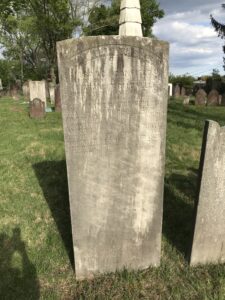
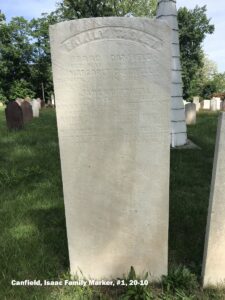
Just to the north of the Isaac Canfield marker and next to the gravestone of Israel Canfield is the Department of Defense stone for Dr. Jabez Campfield. The location of Dr. Campfield’s grave is unknown, and in 2023 this marker was placed among his relatives by the Morristown Chapters of the Daughters of the American Revolution and the Society of the Cincinnati in New Jersey. Dr. Campfield was a Morristown physician and leading citizen as well as a surgeon during the Revolutionary War. Some of his accomplishments are listed on a memorial plaque attached to the rear of the marker. He was also a member of the building committee for the second church building, completed in 1795. Dr. Campfield’s residence, originally on Morris Street, now called the Schuyler-Hamilton House, has been owned and maintained by the Morristown Chapter of the DAR since 1923.
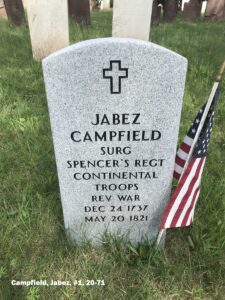
Nearby, the third stone south of the Isaac Canfield family monument and marked by a medallion of The Daughters of the American Revolution, is the resting place of General John Doughty. Doughty was an artillery officer in the American Revolution who served briefly as Chief of Staff of the United States Army. His impressive home once stood where Mount Kemble and Colles Avenues meet. Apartments now occupy the site. In 1825, John was chairman of the committee to host General Lafayette’s return visit to Morristown. General Doughty’s likeness is another one of those appearing on the former department store.
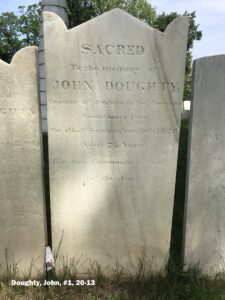
Farther off to the left is the white grave stone of Joshua Guerin, a blacksmith, who served as a Sergeant in the Morris County Militia. His home still stands at the corner of Jockey Hollow and Sugar Loaf Roads at the entrance to Jockey Hollow National Park.
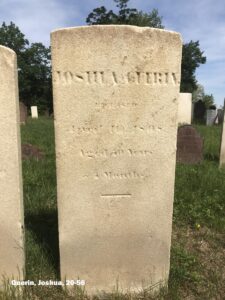
Now proceed to Location #5.
